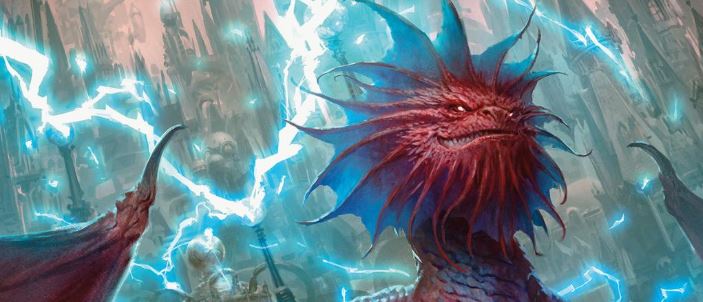(Niv-Mizzet, ParunNiv-Mizzet, Parun | Art by Svetlin Velinov)
Niv-Mizzet Is It
Hi everyone! Welcome back to The Knowledge Pool, where we take a deep dive on deep commanders!
Being new to the Commander landscape is exciting and intimidating. There are an endless number of legends to choose from, and learning the qualities that make an impactful commander takes time. Maybe you've arrived here after playing another format like Standard or Modern, and the cards that comprised your familiar metas now lack the same luster in a 100-card singleton format. Even so, it can be comforting to cling to these cards and strategies as you approach your first Commander decks, easing your transition into the world of big mana, big spells, and political interaction.

The Innistrad block was the first time Magic became my primary hobby. I didn't have much money, I only had a vague sense of what made a deck work, and the world of Magic seemed all the more deep and wondrous. I had been playing decks given to me by friends, and as I worked towards a deck of my own, I found this article that would introduce me to a whole new side of the game: spellslinging. This was a deck with no creatures, tons of instants and Islands and Mountains, and putting it all together introduced me to the thrilling and intoxicating style that is control.
I played this deck until I couldn't anymore, adding Snapcaster MageSnapcaster Mage when I saved up the money, Faithless LootingFaithless Looting when it was released in Dark Ascension, and finally a splash of black for extra removal. Naturally, when I finally moved on to Commander, I wasn't yet the green mage many of you know me for, and instead I had the greatest affinity for blue and red.
One of the first legendary creatures to take my interest was Niv-Mizzet, the FiremindNiv-Mizzet, the Firemind, but at the time, I knew so little of deckbuilding and the older Magic card pool that I couldn't even begin to put a cohesive strategy together. Sure, blogs existed, and I devoured the ideas put forth by other players for building the deck, but I could never muster the time or money to build it in real life. Time passed, and I forgot about Niv-Mizzet in favor of greener pastures. It wasn't until Guilds of Ravnica was released that I took new interest in Niv in his more recent iteration: Niv-Mizzet, ParunNiv-Mizzet, Parun.
Let's talk a little bit about what Niv-Mizzet, ParunNiv-Mizzet, Parun brings to the table in comparison to his Firemind form. Parun has a more challenging mana cost, but he also offers a bigger body and can't be countered. Both Nivs let us deal damage when we draw cards, but the big difference here is that the Firemind has an activated ability to allow us to draw cards, while Parun will draw us cards whenever any player casts an instant or sorcery. As a result, Parun has a much higher ceiling than Firemind, while still boasting much of the same combo potential that made the Firemind so threatening.
For me, the fact that Parun synergizes with instants and sorceries offers us a clear strategic direction that the Firemind lacks. With Parun, cantrips and draw spells suddenly represent a lot more value, while each counterspell and removal spell we play replaces itself. The fact that Parun triggers off of opposing spells means that even if our opponents attempt to remove Niv, we'll likely get to draw cards, and if Niv is ignored he'll act like a less annoying (or possibly more annoying) Rhystic StudyRhystic Study.

So what direction are we going to go with Niv-Mizzet, ParunNiv-Mizzet, Parun? I want to play Niv in a deck that's primarily instants and sorceries, and the fact that we're encouraged to draw cards makes me interested in cards like Wheel of FortuneWheel of Fortune and TimetwisterTimetwister and their ilk. Wheels, Twisters, and other draw spells will burn out our opponents quickly, making Niv an efficient win condition, but we'll need to protect him and ourselves if we hope to survive the hate that comes at us. For this reason, I want a fair amount of creature removal and a handful of counters, and the card drawing we do in the early- to mid-game will help us ensure that we sculpt a hand that's ready to attack any situation. Simply put, we're a classic UR control deck aiming to grind out a game.
Let's take a look at the deck, and then break down the pieces that will lead us to victory. You can check out an interactive version of this deck on Archidekt here.
Niv-Mizzet, Parun
View on ArchidektCommander (1)
- 1 Niv-Mizzet, ParunNiv-Mizzet, Parun
Creatures (4)
- 1 Niv-Mizzet, the FiremindNiv-Mizzet, the Firemind
- 1 Tandem LookoutTandem Lookout
- 1 Consecrated SphinxConsecrated Sphinx
- 1 The Locust GodThe Locust God
Instants (26)
- 1 BrainstormBrainstorm
- 1 Mystical TutorMystical Tutor
- 1 Swan SongSwan Song
- 1 Arcane DenialArcane Denial
- 1 CounterspellCounterspell
- 1 Cyclonic RiftCyclonic Rift
- 1 ElectrodominanceElectrodominance
- 1 ImpulseImpulse
- 1 Izzet CharmIzzet Charm
- 1 Pull from TomorrowPull from Tomorrow
- 1 Reality ShiftReality Shift
- 1 TrickbindTrickbind
- 1 TwincastTwincast
- 1 CapsizeCapsize
- 1 Chaos WarpChaos Warp
- 1 CounterfluxCounterflux
- 1 DisallowDisallow
- 1 Frantic SearchFrantic Search
- 1 Chemister's InsightChemister's Insight
- 1 CommitCommit
- 1 Fact or FictionFact or Fiction
- 1 Fateful ShowdownFateful Showdown
- 1 Rain of RevelationRain of Revelation
- 1 EvacuationEvacuation
- 1 Mystic ConfluenceMystic Confluence
- 1 Expansion / ExplosionExpansion / Explosion
Sorceries (17)
- 1 Faithless LootingFaithless Looting
- 1 PonderPonder
- 1 PreordainPreordain
- 1 VandalblastVandalblast
- 1 Winds of ChangeWinds of Change
- 1 Day's UndoingDay's Undoing
- 1 WindfallWindfall
- 1 Deep AnalysisDeep Analysis
- 1 Mizzix's MasteryMizzix's Mastery
- 1 Mystic RetrievalMystic Retrieval
- 1 Devastation TideDevastation Tide
- 1 Mana GeyserMana Geyser
- 1 Reforge the SoulReforge the Soul
- 1 Time ReversalTime Reversal
- 1 Echo of EonsEcho of Eons
- 1 Time SpiralTime Spiral
- 1 Blasphemous ActBlasphemous Act
Artifacts (8)
- 1 Basilisk CollarBasilisk Collar
- 1 Sol RingSol Ring
- 1 Izzet SignetIzzet Signet
- 1 Talisman of CreativityTalisman of Creativity
- 1 Thought VesselThought Vessel
- 1 Coalition RelicCoalition Relic
- 1 Commander's SphereCommander's Sphere
- 1 Primal AmuletPrimal Amulet
Enchantments (5)
- 1 CuriosityCuriosity
- 1 Firemind's ResearchFiremind's Research
- 1 Search for AzcantaSearch for Azcanta
- 1 Ophidian EyeOphidian Eye
- 1 Thousand-Year StormThousand-Year Storm
Planeswalkers (1)
- 1 Narset, Parter of VeilsNarset, Parter of Veils
Lands (38)
- 1 Cascade BluffsCascade Bluffs
- 1 Command TowerCommand Tower
- 1 Desolate LighthouseDesolate Lighthouse
- 1 Detection TowerDetection Tower
- 1 Highland LakeHighland Lake
- 16 IslandIsland
- 1 Izzet BoilerworksIzzet Boilerworks
- 8 MountainsMountains
- 1 Reliquary TowerReliquary Tower
- 1 Shivan ReefShivan Reef
- 1 Steam VentsSteam Vents
- 1 Sulfur FallsSulfur Falls
- 1 Swiftwater CliffsSwiftwater Cliffs
- 1 Temple of EpiphanyTemple of Epiphany
- 1 Terrain GeneratorTerrain Generator
- 1 Wandering FumaroleWandering Fumarole
The Breakdown
If we want to play a controlling game, we're going to need to make several considerations. First, we need to be able to answer the spells our opponents play, but unlike Standard and Modern control decks we don't have the luxury of dealing with a single opponent. We'll want to focus on spells that can answer multiple threats at the same time, and we'll want lots of card draw and filtering to dig us into the spells we need when we need them. While counterspells aren't at their best in Commander, we'll still want a handful to answer threats that put us in mortal danger and to keep Niv safe once we have him on board.
The next consideration we need to make is our spell distribution. Niv will reward us for playing lots of instants and sorceries, and as a result my deck is packing 43. Of these, I've slanted more heavily towards instants with a 26 to 17 split. If at all possible we want to be playing an instant-speed game so that our counters are available, and if we have nothing to counter we can still invest our mana into draw spells. Drawing at instant speed also has the benefit of turning Niv into an instant-speed creature-killing machine, allowing us to threaten any dudes that might get pointed in our direction.

Despite our interest in playing at instant speed, most wheels or twisters come in sorcery form. However, for the amount of power these cards offer when cast alongside Niv, we'll happily make the exception. These cards have a dual purpose: the obvious synergy here is the ability to draw tons of cards and burn our opponents for lots of damage; the other benefit these cards offer is the ability to drop the bad cards in our hand while allowing us to reload if we've exhausted our removal and counters.
Our curve is centered at an average CMC of 3.23, and the bulk of our spells are two- and three-drops. Generally, for 1-3 mana we'll be casting cantrips to filter our draws, playing ramp spells, and holding up counters. Once we hit 4-6 mana, our draw power intensifies and we'll be able to start pulling ahead of the table in card advantage. This is a deck that's happy to let a game unfold as it builds up resources and sculpts a hand, so don't feel pressured to interact outside of life-threatening situations. Ideally, we'll play a passive game, and the longer we can fly under the radar, the better.
Now that we have an idea of how we're approaching the game, let's take a deeper dive into the card selections.
Drawing into a Win
Card Draw, Cantrips, and Wheels
View on ArchidektCantrips (6)
- 1 BrainstormBrainstorm
- 1 Faithless LootingFaithless Looting
- 1 PonderPonder
- 1 PreordainPreordain
- 1 ImpulseImpulse
- 1 Izzet CharmIzzet Charm
Wheels (9)
- 1 Winds of ChangeWinds of Change
- 1 Day's UndoingDay's Undoing
- 1 WindfallWindfall
- 1 Commit // MemoryCommit // Memory
- 1 Fateful ShowdownFateful Showdown
- 1 Reforge the SoulReforge the Soul
- 1 Time ReversalTime Reversal
- 1 Echo of EonsEcho of Eons
- 1 Time SpiralTime Spiral
Draw (12)
- 1 Firemind's ResearchFiremind's Research
- 1 Pull From TomorrowPull From Tomorrow
- 1 Search for AzcantaSearch for Azcanta
- 1 Frantic SearchFrantic Search
- 1 Narset, Parter of VeilsNarset, Parter of Veils
- 1 Chemister's InsightChemister's Insight
- 1 Deep AnalysisDeep Analysis
- 1 Fact or FictionFact or Fiction
- 1 Rain of RevelationRain of Revelation
- 1 Mystic ConfluenceMystic Confluence
- 1 Consecrated SphinxConsecrated Sphinx
- 1 Expansion / ExplosionExpansion / Explosion
Unsurprisingly, our card advantage spells include many staples of UR, like Fact or FictionFact or Fiction, Faithless LootingFaithless Looting, PonderPonder, and Consecrated SphinxConsecrated Sphinx. There are, however, some standout options here.
Search for AzcantaSearch for Azcanta has been a Standard staple for a while, and I love what it offers to this deck. The fact that we get to pay two mana for a free Surveil every turn is almost good enough on its own, but once we flip Search for AzcantaSearch for Azcanta into Azcanta, the Sunken RuinAzcanta, the Sunken Ruin, we'll have the perfect enabler for our instant-speed gameplan. Azcanta, the Sunken RuinAzcanta, the Sunken Ruin will let us draw a noncreature spell each turn for the small investment of three mana, and since we'll usually be holding up mana anyway, Azcanta is the perfect mana sink.
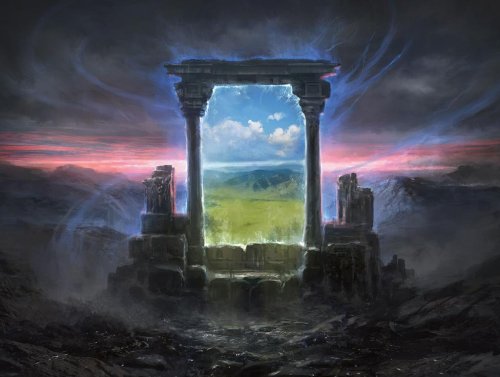
Day's UndoingDay's Undoing received a significant amount of hype when it was first released, but it never met the expectations placed upon it. Even in Commander, the fact that Day's UndoingDay's Undoing forcibly ends the turn means that most decks aren't interested. This deck, however, doesn't care if our turn ends, or that Niv won't get those damage triggers, just as long as we get to leave up mana to cast spells on opposing turns.
Two other Twister-style effects will let us interact with our graveyard favorably: Echo of EonsEcho of Eons and the Commit half of Commit // MemoryCommit // Memory. The new Echo of Eons is a touch over-costed until we consider that we can recast it for three mana from graveyard. If the game has drawn on too long, we can cast Echo and then cast it for its Flashback cost to quickly deal 14 damage with Niv and see 14 new cards. Seeing so many cards also means we have a decent chance to find any of our combo pieces that can help us close a game. Commit // MemoryCommit // Memory is incredibly versatile in this deck. For four mana, Commit will let us effectively counter or bounce anything causing us problems, and once it's in our graveyard, we can activate Memory to shuffle the problem card away.
The last card from this section that I want to highlight is Expansion // ExplosionExpansion // Explosion. At first glance, the most important aspect of this card is Explosion. For a deck that wants to draw and kill creatures at instant speed, Explosion is a win-win, and only gets better if we can cast it with Niv on board. The Expansion half also shouldn't be overlooked. We're limited to copying spells with CMC 4 or less, but we'll have a surprising number of targets. Even something as simple as copying a cantrip can dig us into the pieces we need, so we need to stay cognizant of the utility at our fingertips. (As a personal aside, I picked up Temur Reclamation in Standard before War of the Spark released, and I lost a surprising number of games because I forgot about Expansion when considering my options. Let my failures be a lesson to you.)
The Payoff
So we can draw a lot of cards, and we already know that Niv-Mizzet is an excellent payoff that we'll almost always have access to. But Commander is a complex format, and most of the time our plans won't go as intended. I've included a handful of cards that synergize with our card-drawing themes, giving us some additional options.
Drawing Gas
View on Archidekt- 1 Niv-Mizzet, the FiremindNiv-Mizzet, the Firemind
- 1 Mizzix's MasteryMizzix's Mastery
- 1 Thousand-Year StormThousand-Year Storm
- 1 Narset, Parter of VeilsNarset, Parter of Veils
- 1 Basilisk CollarBasilisk Collar
- 1 The Locust GodThe Locust God
Given the similarities between Niv-Mizzet, ParunNiv-Mizzet, Parun and Niv-Mizzet, the FiremindNiv-Mizzet, the Firemind, it only makes sense that we would still want the original Firemind in this deck for the sake of redundancy. Firemind will reward us for all of our draw spells, Wheels, and Twisters, and is a interchangeable piece in our combos, which we'll talk about shortly.
Mizzix's MasteryMizzix's Mastery and Thousand-Year StormThousand-Year Storm both exploit our spellslinging slant. At a base level, Mastery represents a way for us to replay our instants and sorceries in the graveyard, but if we can Overload Mastery we have the potential to draw an incredible number of cards. Thousand-Year Storm is included for the same reason, letting us use a couple of cheaper cantrips to copy our bigger draw spells several times. Both of these could even represent lethal damage with Niv on board and the right mix of spells.
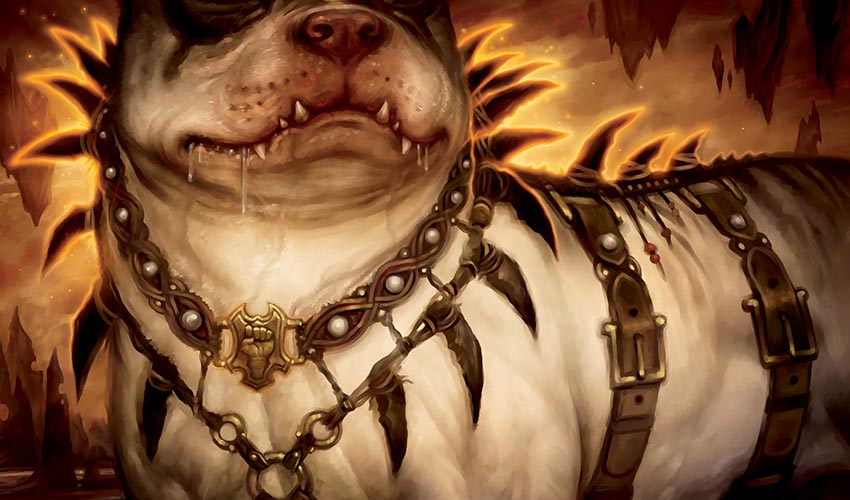
I pointed out that Niv can do a fantastic job of keeping creatures in check, and Basilisk CollarBasilisk Collar is a mana-efficient way to turn him into a creature-killing machine gun. Slapping Collar on Niv will make each card drawn a lethal ping and a source of lifegain. Blue and Red aren't often considered lifegain colors, but Niv is here to prove that notion false.
Much like Niv-Mizzet, the FiremindNiv-Mizzet, the Firemind, The Locust GodThe Locust God represents redundancy in this deck, turning each card drawn into evasive tokens to assault our opponents. The Locust God even gives us a source of repeatable, instant-speed card draw, a perfect mana sink for this strategy. However, the most important aspect of The Locust God here is just how challenging it is to permanently remove. If our opponents kill The Locust God, we get to put it back into our hand to be recast on the following turn. Resilient threats are key for a successful control strategy, and this is one of our best options.
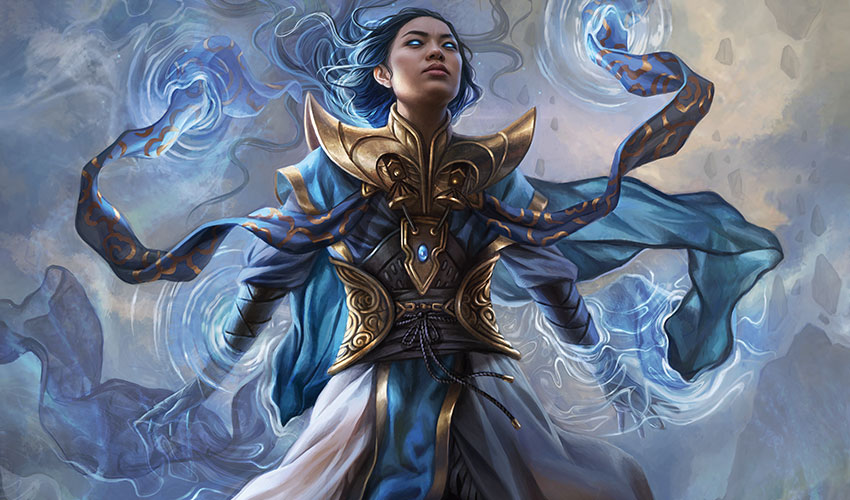
The last card I want to point out is Narset, Parter of VeilsNarset, Parter of Veils. This card has begun to take over most constructed formats, and I've been finding myself squeezing it into most of my blue Commander decks. In most blue decks, Narset is an additional way for us to break parity, preventing opponents from keeping up in card advantage while providing advantage on its own. In Niv, Narset is backbreaking, turning every Wheel and Twister in our deck into a discard spell for our opponents. There's a reason Leovold, Emissary of TrestLeovold, Emissary of Trest was banned in Commander, and in this deck, Narset is doing the good Leovold's work.
Curious Combos
Niv-Mizzet, the FiremindNiv-Mizzet, the Firemind decks are known for their brutal two-card combos, and the Parun benefits from these as well. All we need to quickly kill off most if not all of the players at the table is one of the Nivs and one of the following:
Let's talk about how the combo works: if we have a Niv on board, and if we can enchant it with CuriosityCuriosity or Ophidian EyeOphidian Eye, or Soulbond it with Tandem LookoutTandem Lookout, drawing any card will then trigger the loop of Niv dealing a damage to an opponent, causing us to draw a card from one of our Curiosity effects, and then Niv dealing more damage. We can repeat this loop until all of our opponents are dead, or until we run out of cards.
Here are a couple tips for successfully implementing this combo: first, if we are going to deck ourselves, Curiosity and Ophidian Eye are both "may" abilities, so we can choose to stop drawing cards. Tandem Lookout, however, is not a "may" ability, but it does require us to deal damage to an opponent to draw cards, so we can simply ping ourselves or Niv to turn off the combo. We can circumvent the issue of decking ourselves by casting one of our Twister effects to shuffle our hand and graveyard back into our deck, refilling the library. Conveniently, after we shuffle our hand and graveyard into our deck, we'll also draw a new 7 cards, reestablishing the combo conditions.
With the Firemind, we can simply tap Niv to draw a card and start the combo. With Parun, we'll need to play a cantrip, or simply wait for an opponent to cast an instant or sorcery spell. It's worth noting we can even combo off at instant speed thanks to Ophidian Eye having Flash.
The Cut List
Realistically, any cantrip or draw spell could make its way into our deck. Cards like OptOpt are great when combined with Niv, but a little weak without him. Use the ones you have access to, or mix and match until you find your favorite combination.
One package of cards noticeably absent from my list are those that make tokens or ping when instants and sorceries are cast. Cards like Talrand, Sky SummonerTalrand, Sky Summoner, GuttersnipeGuttersnipe, and Murmuring MysticMurmuring Mystic are popular in decks like this one because of the density of the instants and sorceries. However, I've tried to keep our creature count low, limited to only the most impactful options.
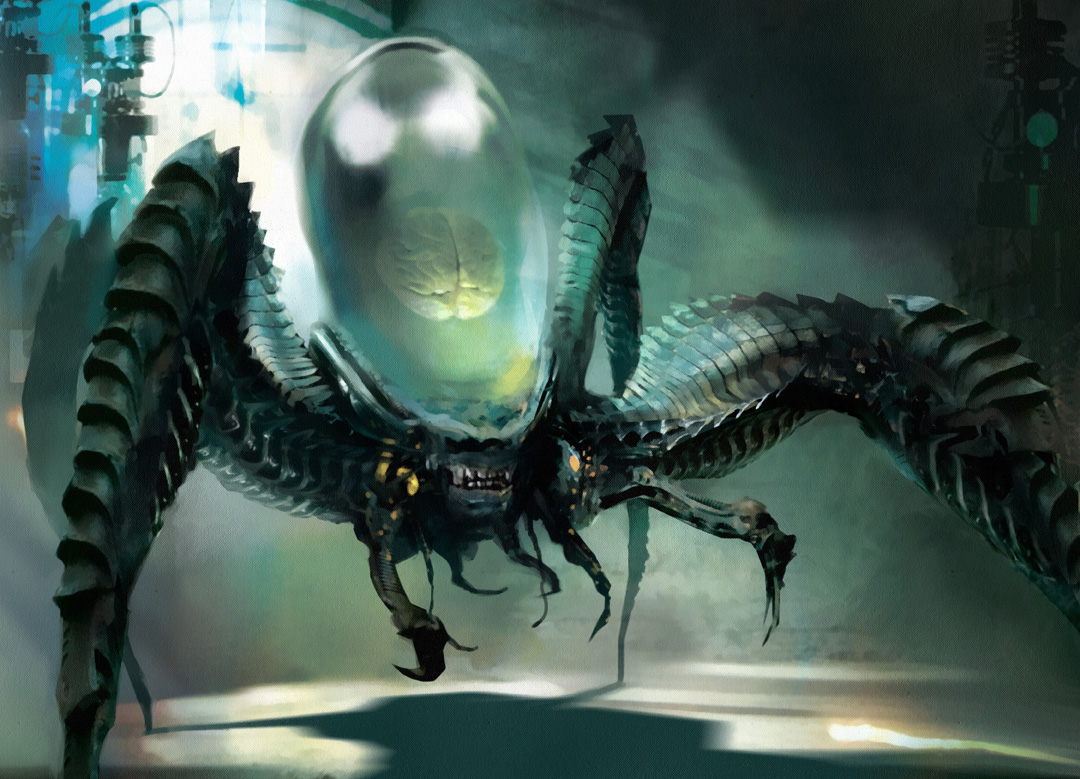
Psychosis CrawlerPsychosis Crawler and Arjun, the Shifting FlameArjun, the Shifting Flame could be great here if we wanted to go harder on the Wheels and Twisters theme. I think Arjun is a little too chaotic for our controlling game plan. Additionally, if it turns out we're lacking some extra killing punch, I'll try out Psychosis Crawler.
I'm currently playing Winds of ChangeWinds of Change as a low-CMC way to draw a lot of cards. However, Tolarian WindsTolarian Winds may be the right call here. We're a blue-heavy deck, and Tolarian Winds is an instant-speed ability. Moreover, Winds is a one-sided ability that won't give our opponents a chance to draw a better hand. I could easily see making this swap; this is one of the cards I'm most interested to try out.
There are a handful of good recursion options we could try out here. Mission BriefingMission Briefing and Finale of PromiseFinale of Promise could both work well in this deck. It's possible we want one of these instead of Mystic RetrievalMystic Retrieval, but I do like the Flashback that Retrieval offers, given how many Wheels we're running.
Lastly, one card I'm itching to try out but have not found a space for is Archmage's CharmArchmage's Charm. This does everything we want: it's instant, it draws cards, and it can be a counterspell. The only issue here is the UUU cost, but with our heavy blue slant, I think we could make it work.
Wrapping Up
Thank you all for taking the time to read my article. I'm looking forward to doing more testing with this deck, and seeing the recommendations you all have.
Until next time, I wish you all the best, and happy brewing!
Scot Sutton
I'm a Timmy that loves Green, Creatures, and Lands. I prefer controlled smashing, and best associate with the Temur colors. I've been playing commander since 2012, and I spend my free time brewing decks and exploring new strategies. I'm also a sports nut, and follow baseball, football, hockey, and soccer in detail.
Your opinions are welcome. We love hearing what you think about Magic! We ask that you are always respectful when commenting. Please keep in mind how your comments could be interpreted by others. Personal attacks on our writers or other commenters will not be tolerated. Your comments may be removed if your language could be interpreted as aggressive or disrespectful. You may also be banned from writing further comments.
